
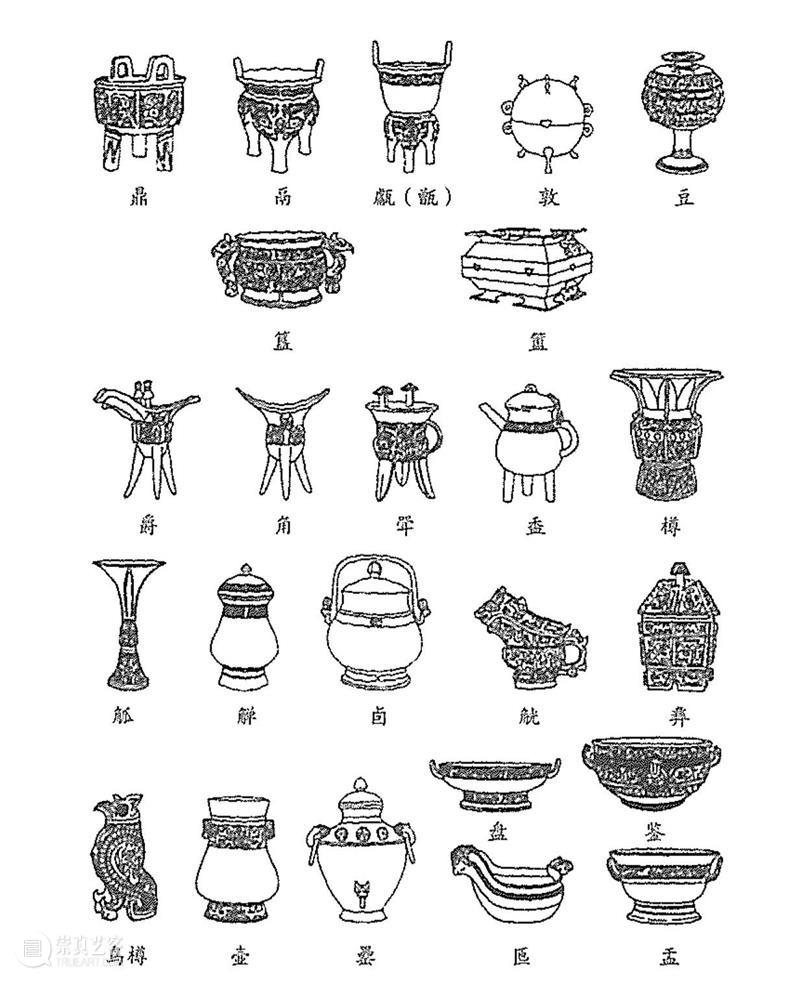
Touching the Pre-Qin Era
张光直先生是华裔考古人类学家,艺术史学者巫鸿的老师,《美术、神话与祭祀》据其自称是为最喜欢的一本著作,也是我当年读得茅塞顿开的一本书。
《左传》有言:“国之大事,在祀在戎。”中国先秦美术史的研究,大多都是离不开这两个前提的。先秦时期的研究,由于文献史料的极度匮乏,极有探究难度,一些相关的学术解读,尤其是艺术史研究,往往流之于想当然的历史臆想。张光直先生凭借自己多年的学养积累与敏锐的历史感,却在这个领域,建立起了让人极为信服的解释框架。虽然海登·怀特在《元史学》中直戳历史学研究中的终极悖论所在,但是毕竟与文学性情天然有别,史学研究的叙事,是在无限的追溯,而非烂漫的重塑。张光直先生的这本书,完全可以作为跨学科研究的范本。
It is said in Zuo Zhuan: "The important events of the country lie in ritual and military affair." Most of the researches on the history of Chinese art before Qin cannot help but taking into consideration these two fields. The research in the pre-Qin period is extremely difficult to carry out due to the lack of documents and material. The investigation was extremely difficult and therefore some academic interpretations were arbitrary and justified by assumptions. However, Chang Kwang-chih, thanks to years of self-cultivation, knowledge and historical sensitivity, managed to elaborate a convincing interpretative framework for these matters. Although Hayden White states that there is a paradox in the historical research in the book History of Yuan Dynasty, however it can be said that the content of the book is very different from a literary text. The narrative of historical research is an endless retrospection rather than a reconstruction of events. Mr.Chang's book can be definitely taken as a model for interdisciplinary research.
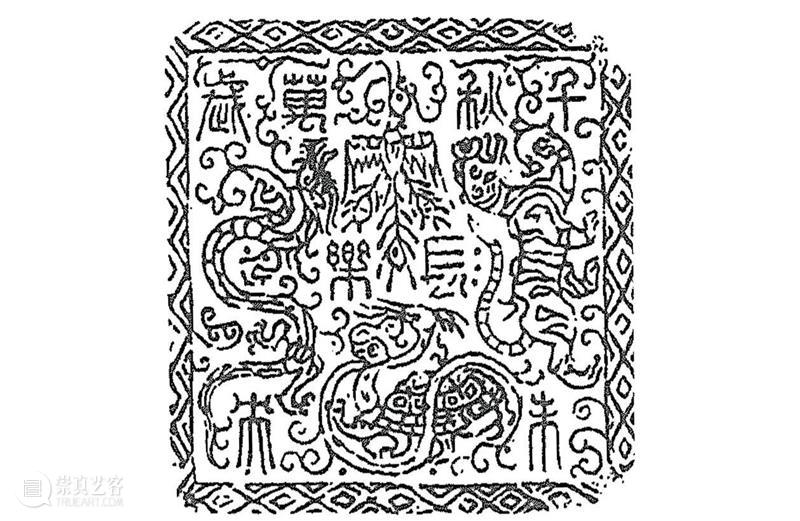
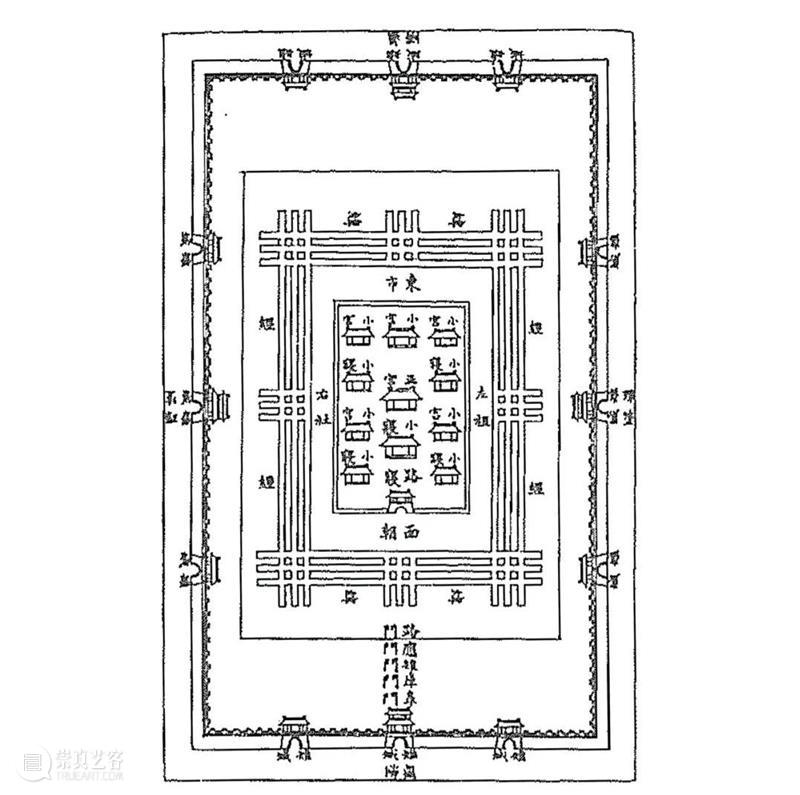
周代,洛阳的理想蓝图。王宫在王城正中,市场在王城北部,祖庙在宫殿之东,社稷坛在宫殿之西,朝堂在宫殿之南。所有建筑的主门都朝南开。Luoyang's ideal blueprint in Zhou Dynasty. The royal palace is in the middle of the city; the market is in the north; the ancestral temple is located on the eastern part of the palace; the altar is on the western part of the palace, and the court hall is on the southern part of the palace. The main doors of all buildings face the south.
作者在书中叙述了商代威权政治的兴起缘由。从部落到“国家”的兴起,“昭穆制度”保证了威权政治能够在统治者亲族间维持延续,而对文字的垄断,保证了其对非统治阶层意识形态的把握,对青铜器制作,以及在祭祀过程中对仪轨的规定与专断,则保证了其始终处于“天”(神界)与“人”(人界)之间衔接的合法中介者的角色,从而为其维持威权政治的统一,笼罩上了一层“天赋治权”的合法性。
In the book, the author described the reasons for the rise of authoritarian politics in the Shang Dynasty. From tribes to "states", the “Zhaomu system”(a system of arranging emperors' temples or memorial tablets) guaranteed that the authoritarian political power would be handed down to the relatives of the ruling families. The monopoly of the writing system ensured an ideological control over the non-ruling classes. The arbitrary rules of the bronze production and of the ritual process during the offer sacrifices justified the role of a legal intermediary between "heaven" (belonging to the realm of the gods) and the "human" (belonging to the realm of human). This function ensured the intermediary could maintain an authoritarian power, benefiting from a legitimate right to natural governance.
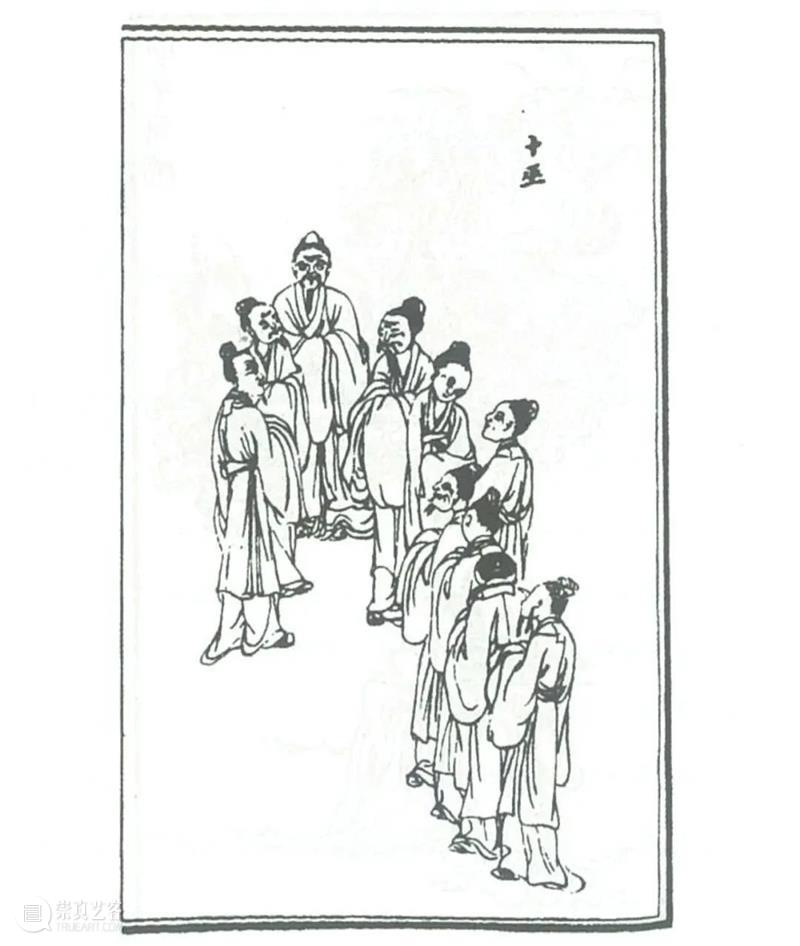
《山海经》中的群巫图。 古代人与神不相混杂,当时有些人非常聪颖敏锐,其智慧能辨识天地、其洞察力可光照渊远。有此能力之人,男称“觋”,女称”巫“。他们在祭祀仪式中负责安排诸神灵之位次,向诸神献祭。The picture of witches in Shan Hai Jing. In ancient China, humans and gods were not mixed together. At that time, sharp and clever people were referred to as Xi if they were men or Wu if they were women. They were responsible to implement the orders from the gods and to offer sacrifices to the gods during the ritual ceremonies.
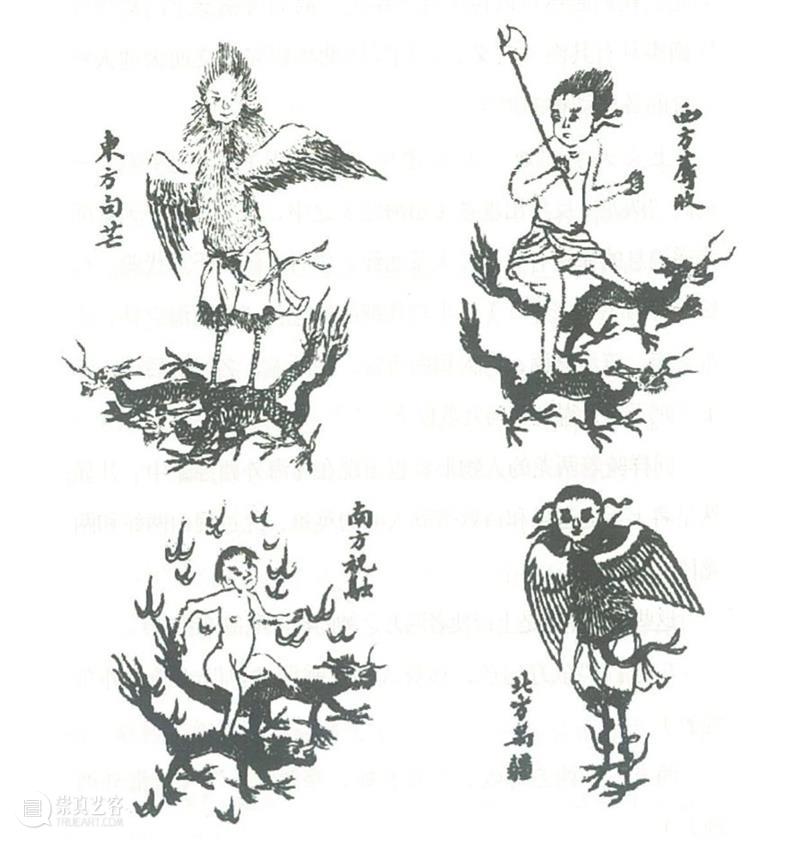
《山海经》的四方之神:东方句芒(左上)、西方蓐收(右上)、南方祝融(左下)、北方禺疆(右下)。这些乘着两龙的使者可能联通上帝与人类的世界。《山海经》因“龙”频繁出现,而被看成是“古代的一部巫觋之书”。The Four Gods in Shan Hai Jing: Eastern Jumang (top left), Western Rushou (top right), Southern Zhurong (bottom left), and Northern Yujiang (bottom right). These messengers riding the two dragons were believed to connect the world of God and mankind. Shan Hai Jing is considered as "an ancient book of witchcraft" because of the frequent appearance of dragon.
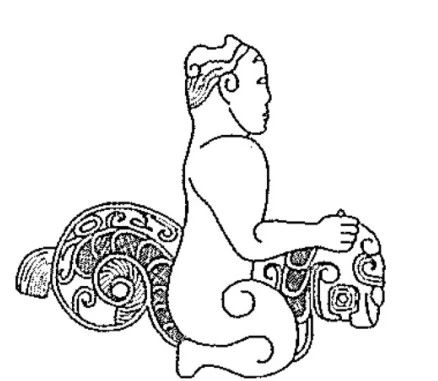
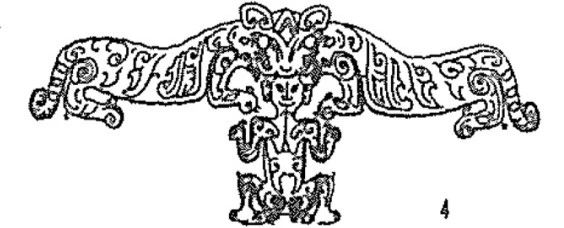
The human-beast-themed patterns in the bronze art of the Shang Dynasty show that people put their heads on the mouth of the beast. The graphic theme of "human and animal mouth facing each other" is found all over the world. In various cultures, animal mouth generally represents a gate that separates the two different worlds (namely, the world of life and death). In ancient China, the open animal mouth may also represent the animal's breath. The ancient Chinese believed that the breath of animals generated the wind, and the wind was another basic medium of transportation between heavenly and earthly world.
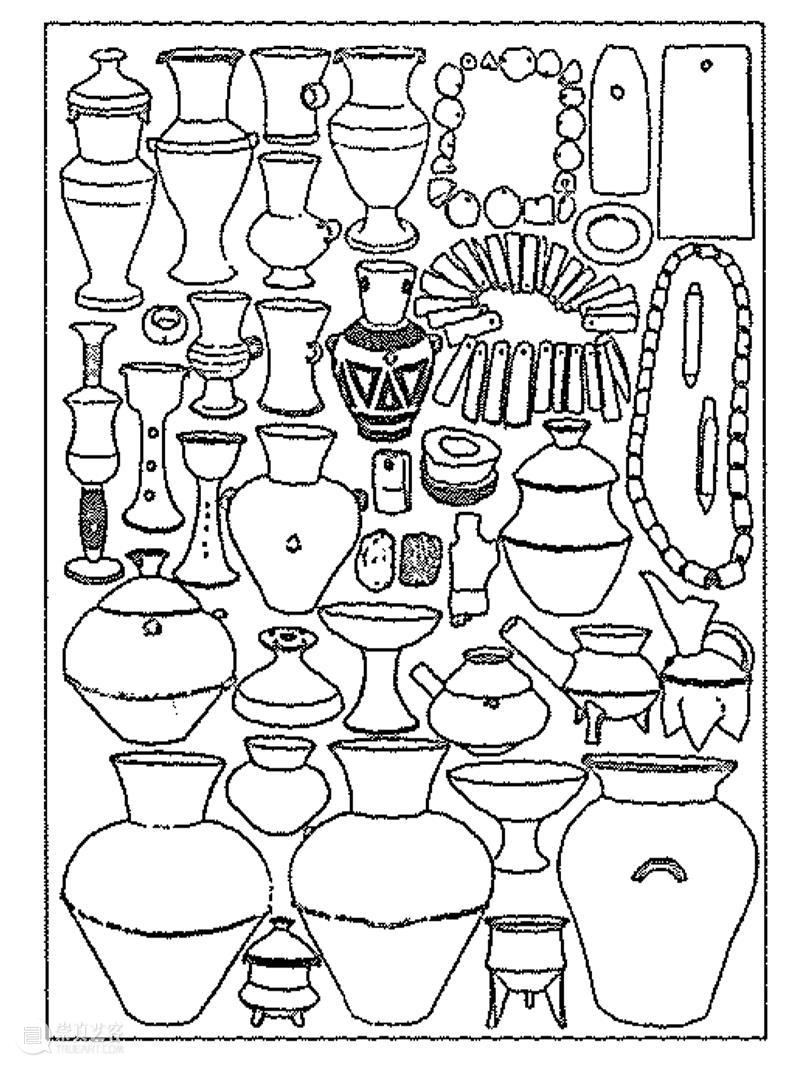
山东泰安大汶口新石器时代遗址一座墓葬中包含丰富的随葬品。A tomb that contains rich funerary objects from the Neolithic site at Dawenkou, Tai'an, Shandong province.
After carrying out researches about the topics of the above discussion, Mr.K.C.Chang has drawn the conclusion that the development paradigm of ancient China was determined by the change of relationship between people; this is very different from Western countries which the development of society is determined by the change of the relationship between people and nature. Therefore China’s development model is characterized by a regular continuity, whereas Western countries’ development process is more irregular and fragmented. This conclusion is obviously a powerful refusal to take the West as a model to analyze the development process of different civilization. Although the content related to art is only used as an illustration of the argument of the book, this book is still good to study art history, especially from the pre-Qin Dynasty or the Bronze Age and to challenge those prejudices and misunderstandings of some interpretations of art historians. The book has a smooth and vivid style. It is enjoyable for academic and non-academic readers.
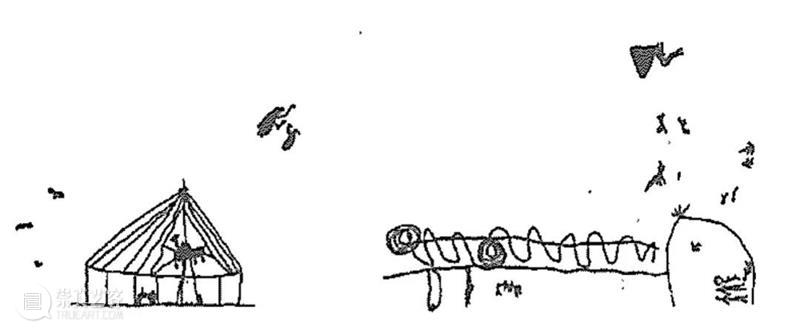
这是西伯利亚楚克其人所绘祭祀仪式中正在飞升的动物神灵。萨满在帐篷中做法,地上摆着祭器。动物的灵魂正飞向上空,飞向死神的居所。这些关于礼器和动物功能的复原,仍存在于现代巫术中。This is the ascending animal souls in the sacrificial ceremony painted by the Chukchi people of Siberia. The shaman used to do it in a tent, with sacrificial vessels on the ground. The animal's soul is flying up to the sky, flying towards the deaths. These functions of ritual vessels and animal still exist in modern witchcraft.
张光直先生生逢一甲子而逝,看照片一脸英气与睿智。可叹若能得享耄耋之年,必有更多杰作流传于世。
Mr. Chang Kwang-chih passed away in his sixties. What a pity! If he had lived longer, he could have created more masterpieces to hand down to the world.
但是能够用文字打败时间,也就获得了另外一种永生。
But his words linger throughout time and this is another form of immortality.
本文图片来自《美术、神话与祭祀》
Photo credit to ©️Art, Myth and Ritual: The Path to Political Authority in Ancient China
▼▼
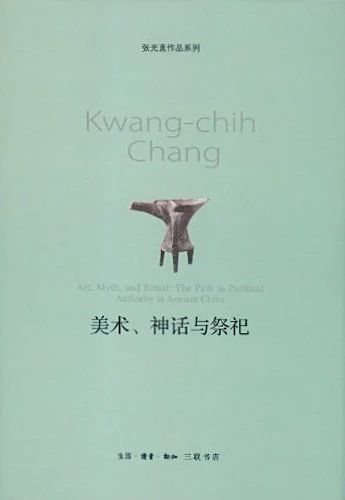
作者:[美]张光直
译者:郭净
出版社:生活·读书·新知三联书店
Author:Kwang-chih Chang
Translator: Guo Jing
Publisher: SDX Joint Publishing Company
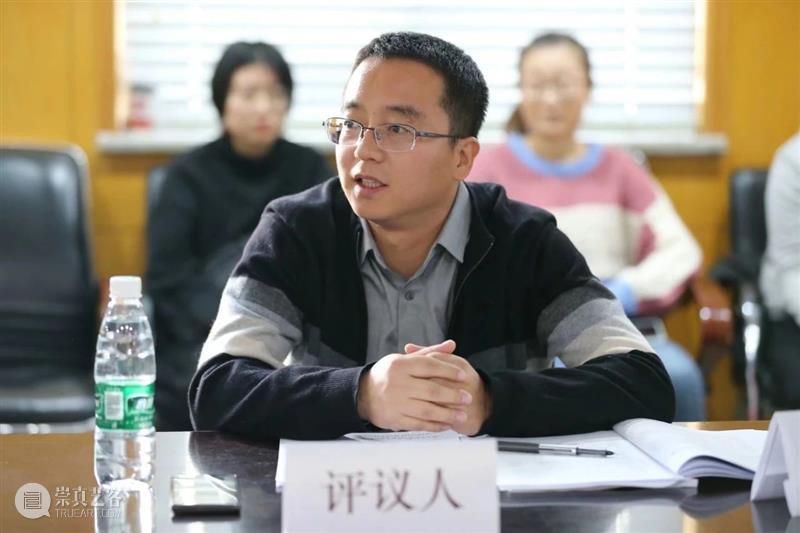
张涛
Zhang Tao
张涛,博士、中央美术学院副教授、硕士研究生导师。研究领域为近现代艺术史。出版专著《草头露与陌上花——齐白石北漂三部曲》,获第二十七届“金牛杯”优秀美术图书奖铜奖。合著五部,发表相关学术论文四十余篇。
Dr.Zhang Tao, associate professor and master advisor of Central Academy of Fine Arts. His research field is modern art history. Publication includes “Dew on Grass Tip and Flowers on The Path - Qi Baishi Trilogy”. He won the Bronze Award of the 27th "Golden Bull Cup" Excellent Art Book Award and co-authored five books and published more than 40 related academic papers.
相关阅读 Related Article

Opening Hours: Every day 10:00-22:00
【媒体垂询 I Media Contact】
www.parkviewgreenart.com



已展示全部
更多功能等你开启...





 分享
分享